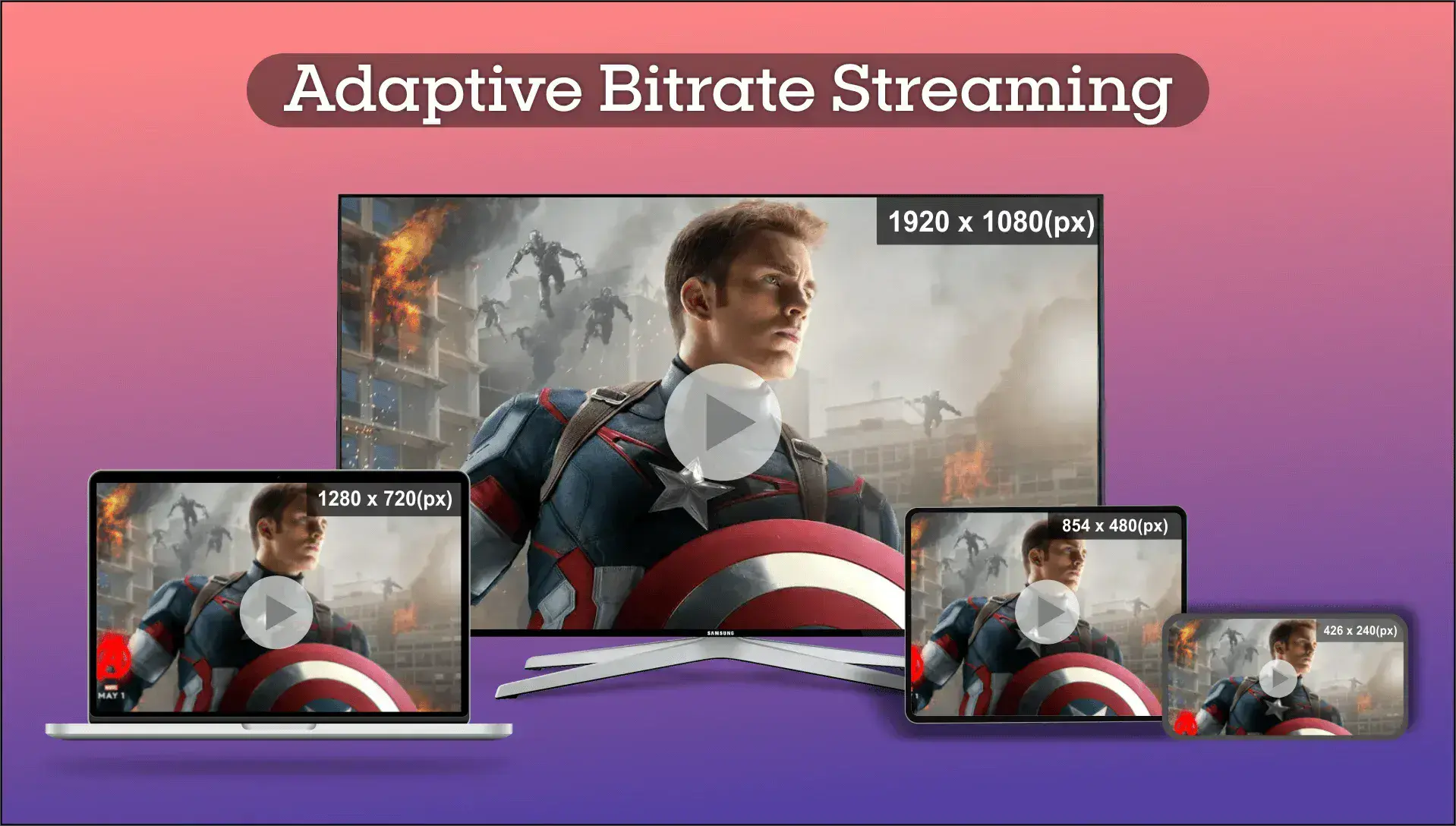Adaptive Bitrate Streaming: Redefining Video Delivery
Discover how adaptive bitrate streaming transforms online video delivery for an enhanced viewer experience.

Video streaming and OTT are becoming increasingly popular in today’s fast-paced digital environment. But, the major downfall comes when you have poor internet access. This is in fact frustrating for viewers and impacts their viewing experience because of constant buffering and pauses. However, constant innovation has made streaming easy and video delivery across the globe via Adaptive Bitrate Streaming (ABR).
Curious to know how?
Read the complete article to learn more about ABR and how it has transformed online video distribution. Let’s take a closer look at how ABR works and the benefits it provides.
First of all, let’s understand from the introduction.
Table of Contents
ToggleAdaptive Bitrate Streaming: An Introduction
ABR, or adaptive bitrate streaming, is a cutting-edge technique that optimises video content transmission over the internet. It is possible by constantly modifying video playback quality to match the viewer’s internet connection.
Moreover, ABR adapts video quality in real time based on the available bandwidth and device capabilities of the viewer. Fo the viewers, ABR delivers a seamless and uninterrupted streaming experience by automatically responding to changing connection circumstances, reducing unpleasant buffering issues.
Key Components of ABR
To understand how ABR works, it’s important to first become acquainted with its fundamental components:
- Video Encoder: The video encoder compresses the original video source into several bitrate versions.
- Segmenter: The segmenter divides the encoded video into parts known as segments. These parts allow for efficient delivery as well as adaptive quality modifications.}
- Manifest File: The manifest file serves as a road map for the video player, listing various bitrate variants and their accompanying URLs.
- Decoding: The video player decodes and displays the video segments on the device of the viewer. It connects with the server to retrieve the relevant portions based on the viewer’s current internet connection.
How does ABR Streaming Work?
ABR works by encoding a single video source at several quality levels, which results in many copies known as “bitrate variants.”
- First of all, each bitrate variant has the same content but with different levels of visual and audio quality. These versions are then subdivided into short chunks, usually a few seconds long.
- When a viewer wishes to see a video, the video server talks with the viewer’s device to determine the viewer’s internet speed.
- The server further chooses the best bitrate variation for the viewer’s available bandwidth. As soon as the video begins to play, the ABR algorithm checks the internet connection and optimises the quality on the go.
- Lastly, if the connection becomes unstable, the system automatically switches to a lesser-quality option. If the connection improves, the algorithm will improve as well.
Top Advantages of Adaptive Bitrate Streaming
ABR streaming provides several important advantages that improve the entire video delivery experience:
- Optimised Playback: ABR ensures that viewers, regardless of their internet connection, receive the greatest possible video quality without buffering. ABR avoids irritation and provides a smooth viewing experience by dynamically adapting to the available bandwidth.
- Viewer Retention is Improved: When using ABR, viewers are less likely to abandon a video owing to buffering concerns. ABR increases user satisfaction and audience engagement by ensuring continuous replay.
- Device Compatibility: ABR is compatible with a wide range of devices and platforms, including smartphones, tablets, smart TVs, and PCs. This adaptability enables smooth video playback across multiple platforms, reaching a larger audience.
- Bandwidth Efficiency: ABR optimises bandwidth utilisation by delivering the highest quality video possible for the viewer’s internet connection. ABR avoids wasteful bandwidth consumption by changing video quality in real-time.
Implementing ABR involves the following steps:
- Using video encoding software or a cloud-based service, encode the video at multiple bitrate versions.
- To suit different viewer tastes and internet connections, make sure the bitrate options span a wide range of quality levels (e.g., low, medium, and high).
- Divide the encoded video into short pieces, typically a few seconds in length, using a segmenter tool.
- To ensure smooth transitions during quality modifications, segment durations must be consistent across all bitrate versions.
- Create an MPEG-DASH or HTTP Live Streaming (HLS) manifest file that offers information about the possible bitrate variants and their accompanying URLs.
- The video player should be able to readily access the manifest file, and it should be updated on a regular basis to reflect changes in available bitrates or segment URLs
- Integrate an ABR-capable video player into your streaming platform or website.
- Check that the video player can fetch the relevant parts based on the viewer’s internet connection and smoothly transition between different bitrate versions.
Conclusion
Adaptive bitrate streaming has transformed online video distribution by delivering a fluid and high-quality viewing experience. By dynamically adjusting video quality in real-time based on the viewer’s internet connection, ABR reduces buffering problems and increases viewer engagement. Due to its compatibility with a variety of platforms and devices, good bandwidth use, and straightforward implementation procedure, ABR is an essential tool for content producers and video streaming services. Utilize ABR to your advantage and provide top-notch video content to your viewers regardless of their access to the internet.
Ready to get started, contact us now.